Abstract
The problems associated with recovery of pure cultures of Escherichia coli and Streptococcus faecalis from stream environments were examined utilizing membrane filter chambers. It was observed that upon exposure to the aquatic environment a significant proportion of cells lost their ability to produce colonies on a selective medium, yet retained this capability on a nutritionally rich, nonselective medium. Discrepancies in colony-forming units between nonselective and selective media indicated that a substantial portion of bacterial cells may become physiologically injured due to the environmental stress imposed by the aquatic environment. The extent of injury was observed to vary considerably among the eight different stream environments, since the amount of injury was not uniform for all types of water environments examined. It was observed that the injury acquired by a population of E. coli, during exposure to the aquatic environment, could be rapidly repaired in a nutritionally rich, nonselective medium. As the injured population of cells was exposed to the rich, nonselective broth, increasing proportions of cells were able to repair themselves such that they became insensitive to inhibitory agents in selective media.
Full text
PDF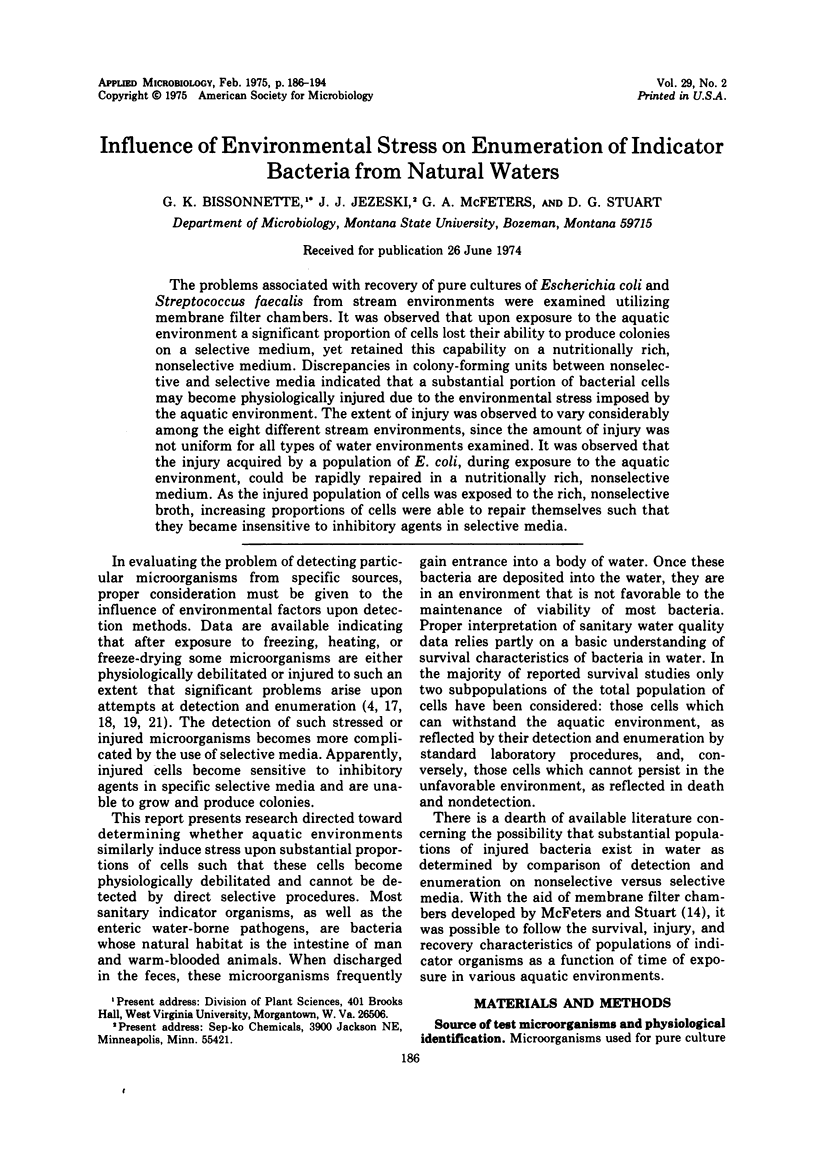
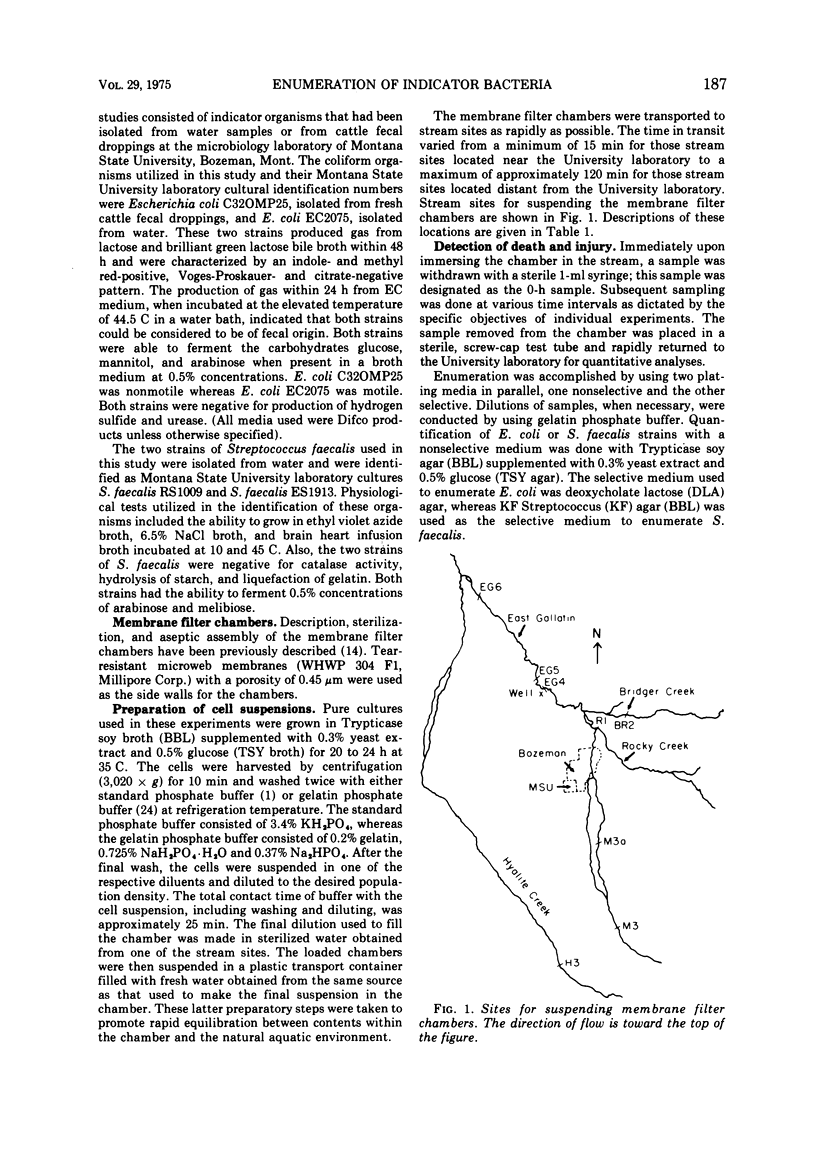
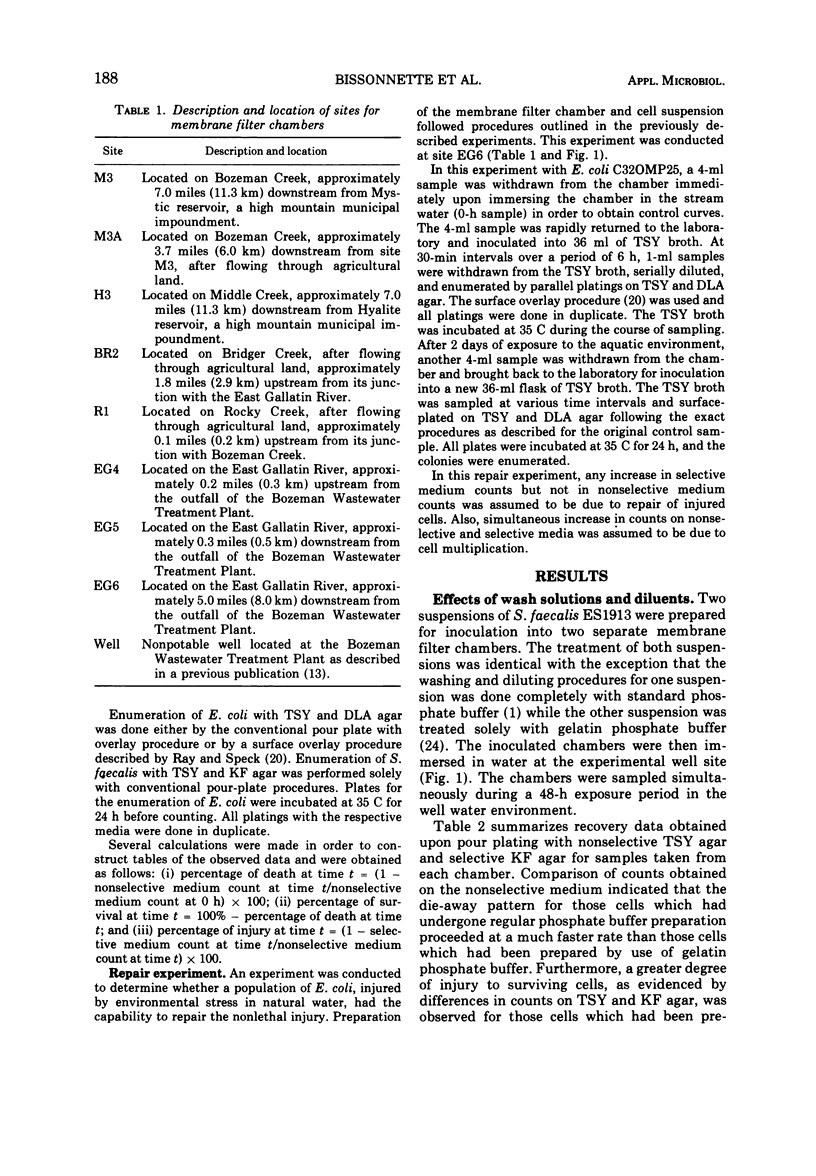
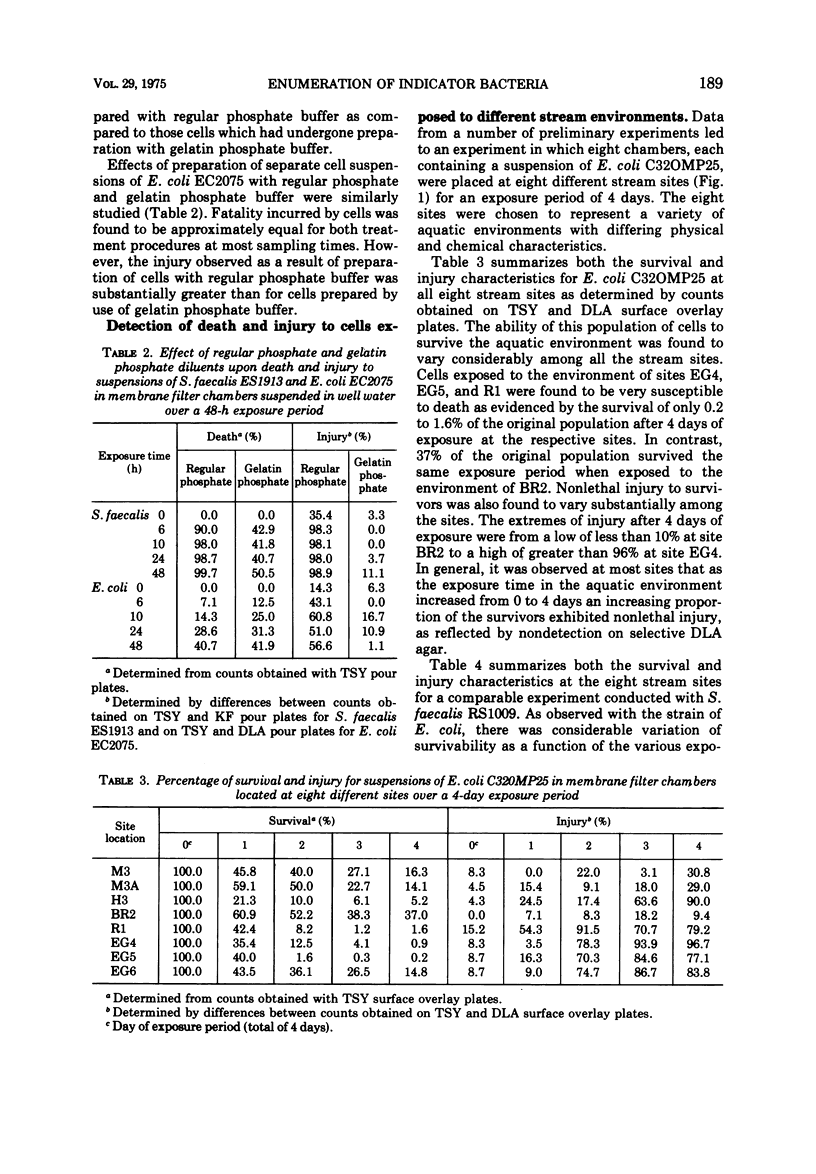
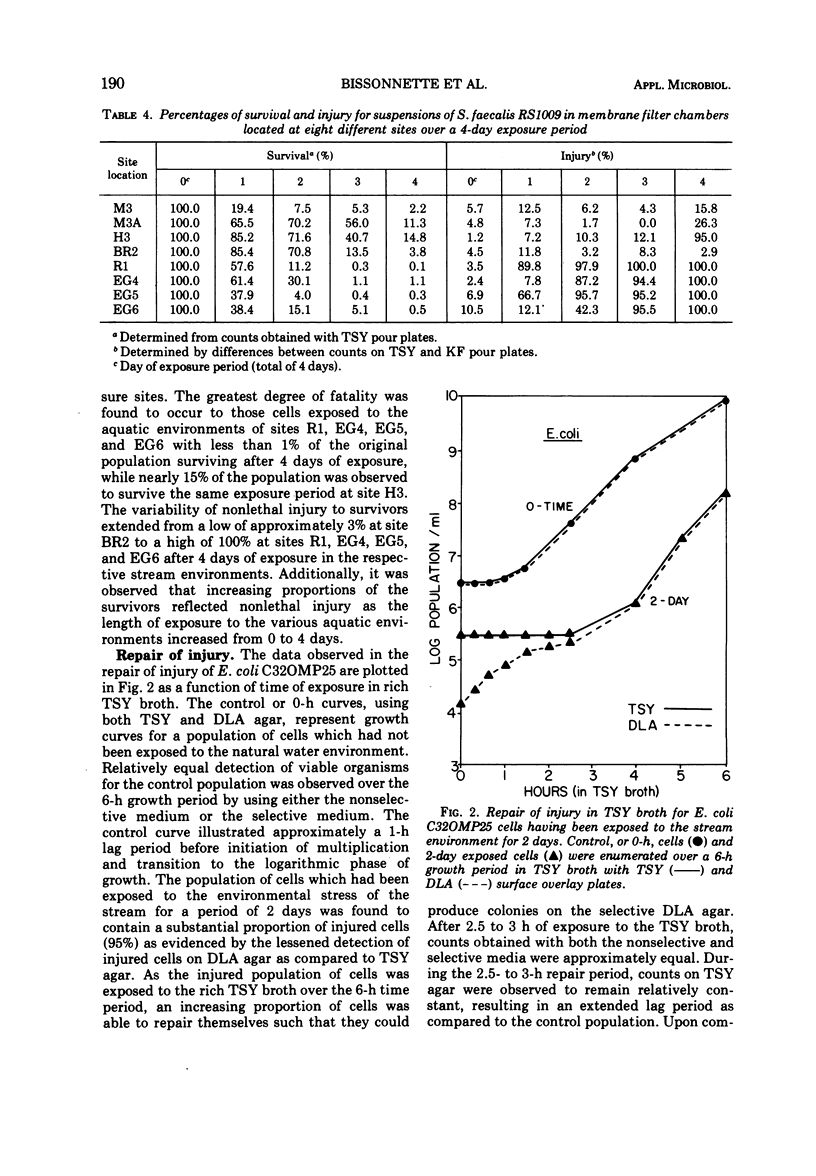
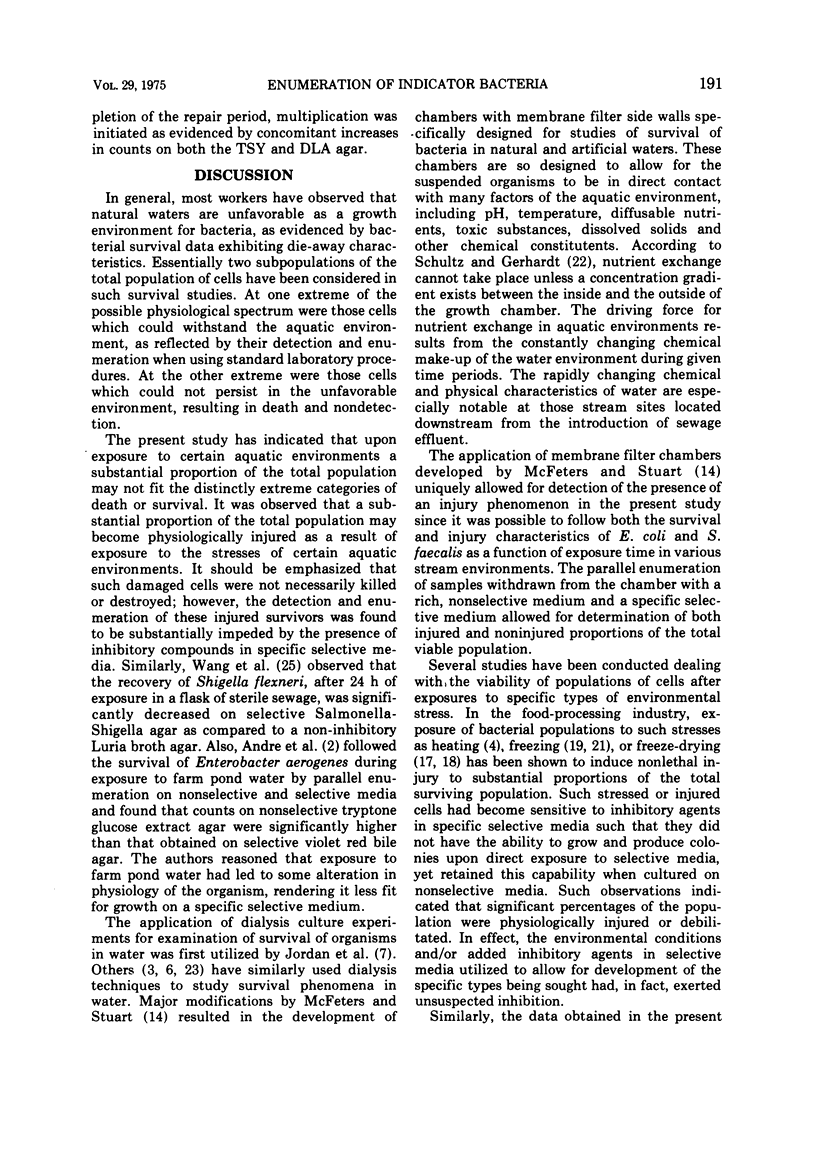
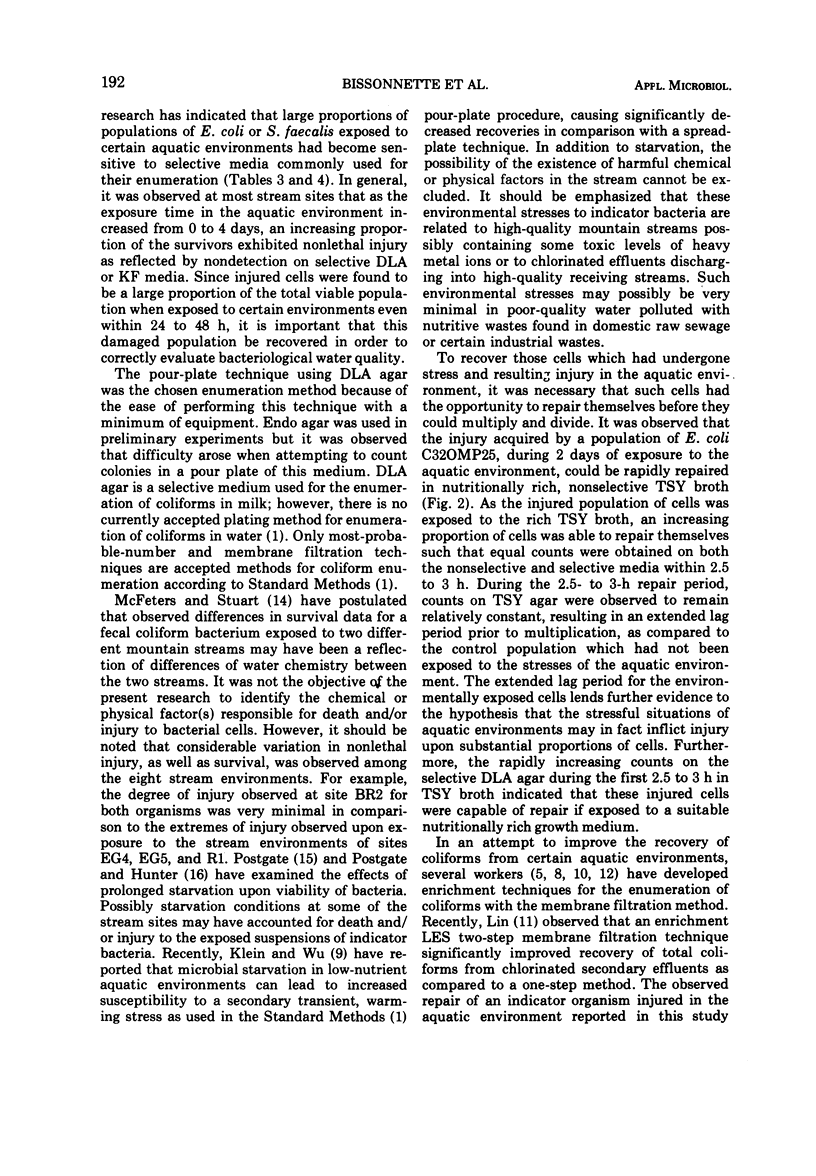
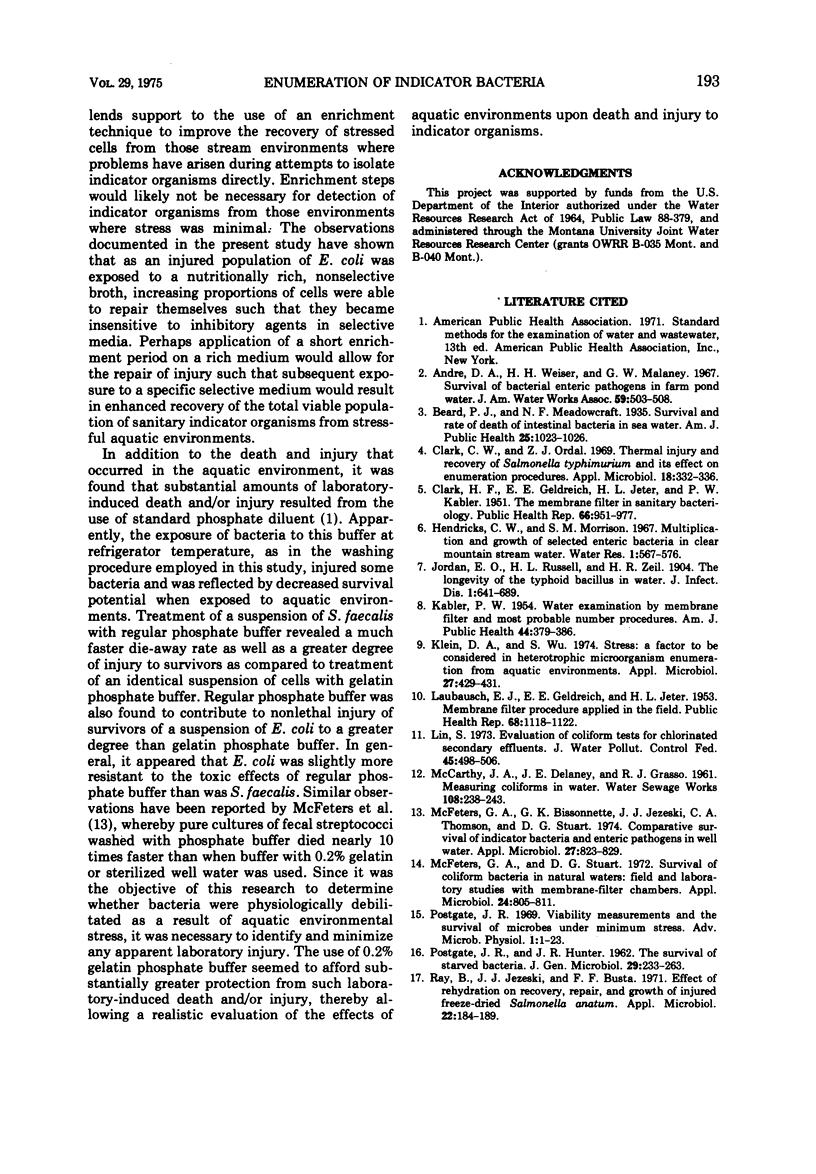
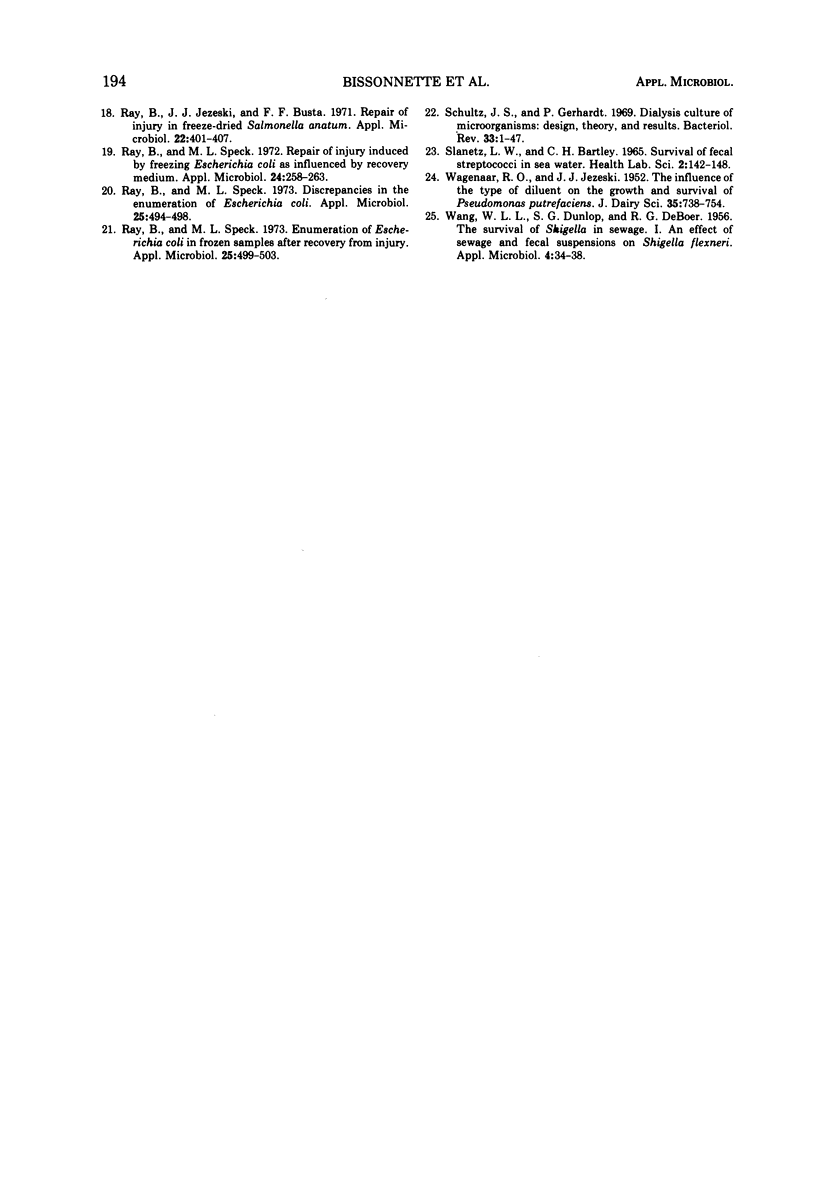
Selected References
These references are in PubMed. This may not be the complete list of references from this article.
- Beard P. J., Meadowcroft N. F. Survival and Rate of Death of Intestinal Bacteria in Sea Water. Am J Public Health Nations Health. 1935 Sep;25(9):1023–1026. doi: 10.2105/ajph.25.9.1023. [DOI] [PMC free article] [PubMed] [Google Scholar]
- CLARK H. F., GELDREICH E. E., JETER H. L., KABLER P. W. The membrane filter in sanitary bacteriology. Public Health Rep. 1951 Jul 27;66(30):951–977. [PMC free article] [PubMed] [Google Scholar]
- Clark C. W., Ordal Z. J. Thermal injury and recovery of Salmonella typhimurium and its effect on enumeration procedures. Appl Microbiol. 1969 Sep;18(3):332–336. doi: 10.1128/am.18.3.332-336.1969. [DOI] [PMC free article] [PubMed] [Google Scholar]
- KABLER P. Water examinations by membrane filter and most probable number procedures; report of a field study of the Standard Methods Committee for the Examination of Water and Sewage. Am J Public Health Nations Health. 1954 Mar;44(3):379–386. doi: 10.2105/ajph.44.3.379. [DOI] [PMC free article] [PubMed] [Google Scholar]
- Klein D. A., Wu S. Stress: a factor to be considered in heterotrophic microorganism enumeration from aquatic environments. Appl Microbiol. 1974 Feb;27(2):429–431. doi: 10.1128/am.27.2.429-431.1974. [DOI] [PMC free article] [PubMed] [Google Scholar]
- LAUBUSCH E. J., GELDREICH E. E., JETER H. L. Membrane filter procedure applied in the field. Public Health Rep. 1953 Nov;68(11):1118–1122. [PMC free article] [PubMed] [Google Scholar]
- Lin S. Evaluation of coliform tests for chlorinated secondary effluents. J Water Pollut Control Fed. 1973 Mar;45(1):498–506. [PubMed] [Google Scholar]
- McFeters G. A., Bissonnette G. K., Jezeski J. J., Thomson C. A., Stuart D. G. Comparative survival of indicator bacteria and enteric pathogens in well water. Appl Microbiol. 1974 May;27(5):823–829. doi: 10.1128/am.27.5.823-829.1974. [DOI] [PMC free article] [PubMed] [Google Scholar]
- McFeters G. A., Stuart D. G. Survival of coliform bacteria in natural waters: field and laboratory studies with membrane-filter chambers. Appl Microbiol. 1972 Nov;24(5):805–811. doi: 10.1128/am.24.5.805-811.1972. [DOI] [PMC free article] [PubMed] [Google Scholar]
- POSTGATE J. R., HUNTER J. R. The survival of starved bacteria. J Gen Microbiol. 1962 Oct;29:233–263. doi: 10.1099/00221287-29-2-233. [DOI] [PubMed] [Google Scholar]
- Ray B., Jezeski J. J., Busta F. F. Effect of rehydration on recovery, repair, and growth of injured freeze-dried Salmonella anatum. Appl Microbiol. 1971 Aug;22(2):184–189. doi: 10.1128/am.22.2.184-189.1971. [DOI] [PMC free article] [PubMed] [Google Scholar]
- Ray B., Jezeski J. J., Busta F. F. Repair of injury in freeze-dried Salmonella anatum. Appl Microbiol. 1971 Sep;22(3):401–407. doi: 10.1128/am.22.3.401-407.1971. [DOI] [PMC free article] [PubMed] [Google Scholar]
- Ray B., Speck M. L. Discrepancies in the enumeration of Escherichia coli. Appl Microbiol. 1973 Apr;25(4):494–498. doi: 10.1128/am.25.4.494-498.1973. [DOI] [PMC free article] [PubMed] [Google Scholar]
- Ray B., Speck M. L. Enumeration of Escherichia coli in frozen samples after recovery from injury. Appl Microbiol. 1973 Apr;25(4):499–503. doi: 10.1128/am.25.4.499-503.1973. [DOI] [PMC free article] [PubMed] [Google Scholar]
- Ray B., Speck M. L. Repair of injury induced by freezing Escherichia coli as influenced by recovery medium. Appl Microbiol. 1972 Aug;24(2):258–263. doi: 10.1128/am.24.2.258-263.1972. [DOI] [PMC free article] [PubMed] [Google Scholar]
- SLANETZ L. W., BARTLEY C. H. SURVIVAL OF FECAL STREPTOCCOCCI IN SEA WATER. Health Lab Sci. 1965 Jul;2:142–148. [PubMed] [Google Scholar]
- Schultz J. S., Gerhardt P. Dialysis culture of microorganisms: design, theory, and results. Bacteriol Rev. 1969 Mar;33(1):1–47. doi: 10.1128/br.33.1.1-47.1969. [DOI] [PMC free article] [PubMed] [Google Scholar]
- WANG W. L. L., DUNLOP S. G., DE BOER R. G. The survival of Shigella in sewage. I. An effect of sewage and fecal suspensions on Shigella flexneri. Appl Microbiol. 1956 Jan;4(1):34–38. doi: 10.1128/am.4.1.34-38.1956. [DOI] [PMC free article] [PubMed] [Google Scholar]


